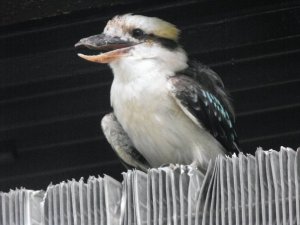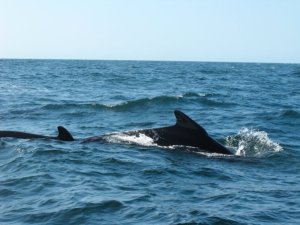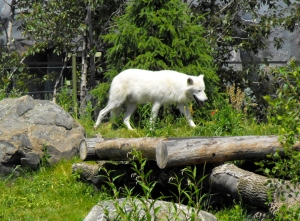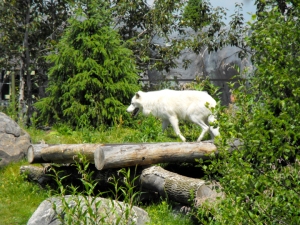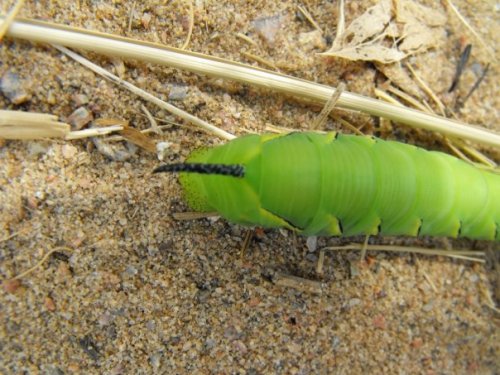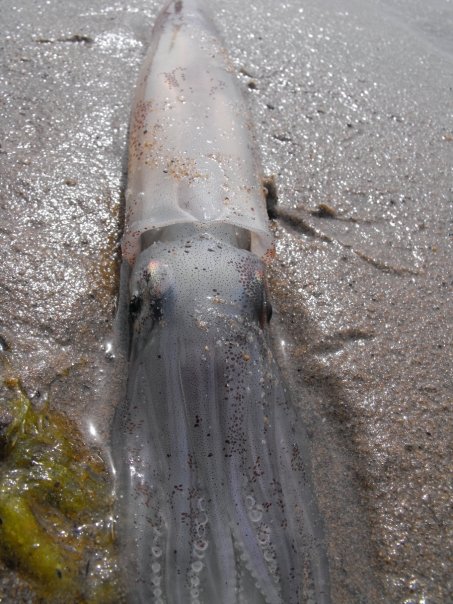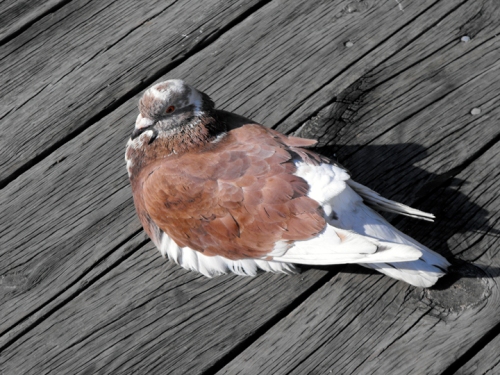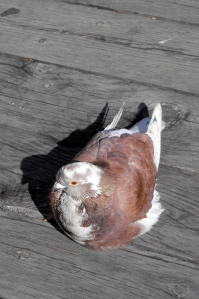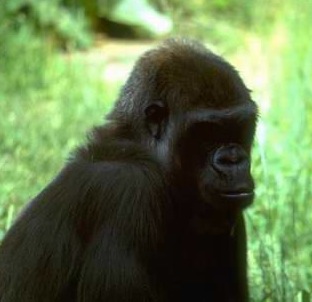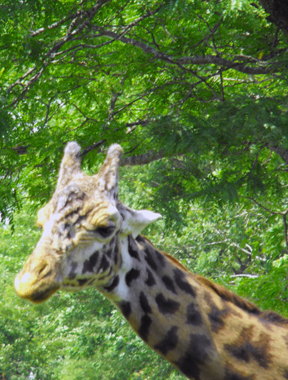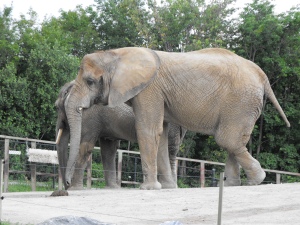The Kookaburra is hard to miss, a hefty bird, he’s known for his noisy laugh. During sunrise or sunset he’s often heard making the following noise, try it out loud:
“Koo-hoo-hoo-hoo-ha-ha-ha-ha”
If you are visiting the kookaburra at The Toronto Zoo, he’ll be in the Australasia pavilion. But make sure you look up – most likely he’ll be perched up high. He’s got a very distinctive, thick eyebrow, about 40 centimeters long. The kookaburra is native to Queensland, New South Wales, Victoria and South Australia. His favourite meal is small rodents, insects, small birds, snakes and lizards.
His beak is brown and his tail is brown with blue tips. When he’s flying, his tail is mostly white. The kookaburra has big feet and legs that are also brown.
Did you know?
Young kookaburra’s work together when feeding. One bird will hold on with mighty strength to one end of the prey while the adult bird pulls backwards at the other end until the body of the prey is torn apart and easier to eat. Gross!

